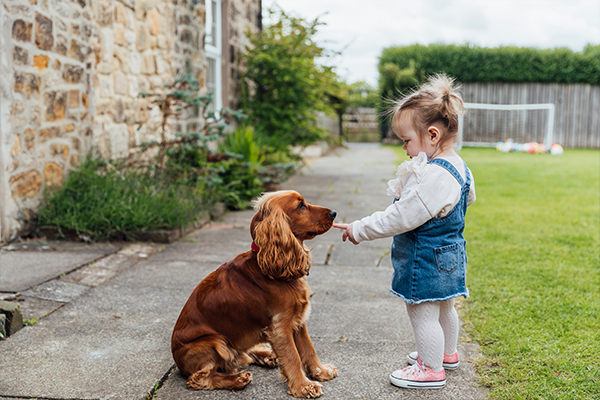Contents
- 1 Average Weight For 2-Year-Old Boys
- 2 Average Weight For 2-Year-Old Girls
- 3 Factors Affecting the Average Weight
- 4 What If My Toddler Is Bigger or Smaller?
- 5 Frequently Asked Questions
- 5.1 What is the focus of the article?
- 5.2 What is the average height and weight for a 2-year-old girl?
- 5.3 What’s more important than sticking strictly to growth charts for a child’s growth?
- 5.4 When is the right age to start potty training?
- 5.5 When do children typically start to learn colors?
- 5.6 How many words should a 2-year-old be able to say?
Average Weight For 2-Year-Old Boys
While girls have their own growth charts to follow, you’re probably curious about the stats for little guys too. Boys typically weigh between 21 to 33½ pounds and stand 32 to 37 inches tall at the age of two. Yeah, your little dude’s got enough weight to keep him grounded while he’s exploring those playgrounds! It’s also around this age that any residual baby chub will start to weed itself out. Always remember, each boy differs from the other. They grow at their own pace, and that’s alright.
Interestingly, at the tender age of two, they’re probably halfway to what they’ll stand tall as adults! Yeah, you heard that right! You can simply double their current height to guesstimate how tall they’ll be as grown-ups.
Your 2-year-old boy’s shape, which may be characterized by a bit of a bigger belly, pinchable cheeks, and chubby thighs, is likely to slim down as he grows older, especially if he’s currently within the average height and weight percentiles.
Average Weight For 2-Year-Old Girls
When it comes to your 2-year-old girl, you’re looking at an average weight ranging between 19½ to 32½ pounds. Now, that’s a wide range! It’s also around these formative years where length can divulge an interesting tidbit about future height. Most 2-year-old girls stand between 31½ to 36½ inches tall. Don’t forget, though, children grow at their own pace.
You might observe a healthy dose of baby chub at this age. Don’t worry, those pinchable cheeks and those chubby thighs are totally on point! As your little one gets older, she’s likely to slim down, especially if she’s keeping within these average weight and height percentiles.

This can be a fascinating time as you might spot glimpses of your kid’s adult height. An old trick in the book is to simply double their current length for a guesstimate of their adult stature.
Factors Affecting the Average Weight
Weight gain plays a unique role in each child’s overall development and varies from one kid to the next. It’s essential to know that a handful of factors can sway these averages.
Growth Spurts
First, let’s chat about growth spurts. These often hit around 2 years and then again between 9 to 15 years in boys, causing weight gains of up to 8 to 10 pounds per year. During this time, boys can appear a touch overweight, but before you jump to conclusions – it could just signify they’re taller than average.
Injuries and Health Emergencies
Unexpected circumstances could also lead to sudden shifts in weight. Suppose your child swallows a lithium coin battery – sounds scary right? But it’s more common than you’d think! This could induce a chemical burn, starting as early as two hours after swallowing. If you catch it early, carb-loaded honey can work wonders to neutralize the pH and coat the battery.
What If My Toddler Is Bigger or Smaller?
It’s perfectly normal for toddlers to grow at different paces and have varying weights. Here’s a breakdown to address concerns if your toddler seems bigger or smaller than average:

Toddler Growth:
-
Growth Charts: These are the most helpful tools to assess your toddler’s growth. Pediatricians use charts that plot weight against height and age. This allows them to see how your child compares to others of the same age and height. You can find resources for growth charts from the World Health Organization (WHO) or the Centers for Disease Control and Prevention (CDC).
-
Individual Differences: Keep in mind that growth is not a linear process. Toddlers will have periods of rapid growth followed by times when they seem to gain weight or height more slowly. As long as your child is following their own growth curve and their weight and height are proportionate, it’s usually not a cause for concern.
What if My Toddler Seems Bigger?
-
Genetics: Family history plays a role in body size. If you or your partner have a larger build, your toddler might naturally be bigger than average.
-
Muscle Mass: Active toddlers tend to have more muscle mass, which can weigh more than fat tissue.
-
Diet and Nutrition: While some larger toddlers might be consuming more calories than needed, it’s important to consult a doctor before making drastic changes to their diet.
What if My Toddler Seems Smaller?
- Genetics: Similar to a larger build, some toddlers might naturally be smaller due to family history.
- Diet and Nutrition: If your child is a picky eater or has limited food intake, they might not be getting the calories they need to grow at the expected rate.
- Medical Conditions: In rare cases, underlying medical conditions can affect growth.
Frequently Asked Questions
What is the focus of the article?
This article addresses parents’ concern over their child’s weight and growth compared to their peers, highlighting that variations are normal and not a cause for alarm. It emphasizes the importance of growth charts and BMI, but also the significance of the child’s overall health and well-being.
What is the average height and weight for a 2-year-old girl?
A 2-year-old girl typically measures between 31.5 to 36 inches in height and weighs between 22 to 32 pounds. However, these are averages and individual growth can vary.
What’s more important than sticking strictly to growth charts for a child’s growth?
The article encourages parents to prioritize their child’s overall well-being and steady growth rather than strictly adhering to growth charts or average figures. Differences in growth from peers are common and usually not a reason for concern.
When is the right age to start potty training?
The right age to start potty training varies with each child, but typically begins between 2 and 3 years of age, with most children being bowel and bladder trained by 4 years of age.
When do children typically start to learn colors?
Children typically start learning the names of colors between the ages of 2 to 3 years old. Some might only be able to name colors when closer to 4 years old. The key sign of progress is being able to correctly name at least three colors.
How many words should a 2-year-old be able to say?
A 2-year-old should be able to say between 100 to 500 words, including more verbs and adjectives. This is crucial for the child’s language development as they start forming short sentences.

Santhan, known to many as Linda, combines her personal training expertise with exceptional motivational coaching skills. Her articles are not just informative but also incredibly inspiring, encouraging readers to take action and pursue their fitness goals. Linda’s unique approach to writing integrates practical fitness guidance with motivational elements, making her content both useful and uplifting.

